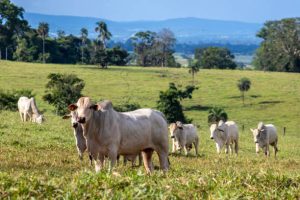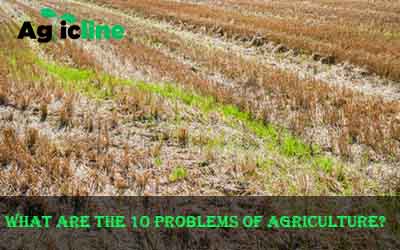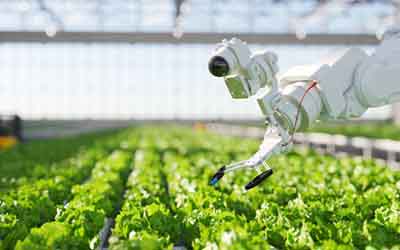Cattle farming stands as one of the most traditional yet enduringly profitable ventures in the agricultural sector.
With the global population continuously on the rise, the demand for beef and dairy products has never been higher.
This enduring demand presents a lucrative business opportunity for those looking to enter the agricultural industry.
Beyond the direct sale of meat and dairy, cattle farming also opens avenues for diversified income streams such as organic manure sales, breeding services, and more.
The versatility and ongoing market need for cattle products make this venture not only viable but potentially highly profitable with the right management and operational strategies.
Starting a cattle farm requires significant initial investment. From purchasing land and cattle to securing feed and proper equipment, the costs can be substantial.
This is where securing financial support becomes pivotal. Adequate funding not only helps in covering the initial setup costs but also supports the farm through its critical early stages until it becomes self-sustaining.
Financial support can come from various sources, including loans, grants, or private investors, each with its pros and cons.
Securing this support is often the first real challenge a prospective cattle farmer faces, but it’s a crucial step towards turning the dream of a farming venture into reality.

How to Choose the Best Financing Option for Your Cattle Farm?
Choosing the best financing option involves assessing your farm’s specific needs, your financial health, and the terms and conditions of each financing source.
Consider factors such as the amount of funding needed, the cost of borrowing (interest rates and fees), repayment terms, and any eligibility requirements.
It’s also important to think about the long-term impacts of your financing choice on your farm’s cash flow and ownership.
Are there any grants available for starting a cattle farm?
Yes, there are grants available for starting a cattle farm, especially for young, beginning, minority, or female farmers.
These grants can come from government agencies, non-profit organizations, or private foundations.
Research and application for these grants require diligence as they are highly competitive.
What should I do if my loan application is rejected?
If your loan application is rejected, seek feedback from the lender to understand the reasons behind the decision.
Address any issues that can be improved, such as enhancing your business plan or improving your credit score, and consider alternative financing options.
Persistence and addressing lenders’ concerns can improve your chances in future applications.
Can I use my land as collateral for a cattle farm loan?
Yes, land is commonly used as collateral for cattle farm loans. The value of the land can significantly impact the loan amount you’re eligible for.
However, later in this article, we will be looking at some of the FAQs in detail.
How to get a loan to start a cattle farm
- Prepare Your Business Plan
- Discover Your Financing Options
- Build a Strong Loan Application
- Navigate the Loan Application Process
- Post-Loan Approval
1. Prepare Your Business Plan
A comprehensive business plan is the cornerstone of any successful cattle farming venture.
It serves as a roadmap, guiding you through the establishment and growth of your farm, and is crucial for securing financial support from lenders or investors.
A well-crafted business plan not only demonstrates your understanding of the cattle farming industry but also outlines your vision, strategies for growth, and financial projections.
It provides a detailed analysis of your business model, helping to identify potential challenges and opportunities, thereby facilitating informed decision-making and strategy development.
A solid business plan is instrumental in enhancing your chances of loan approval. It shows lenders that you have a clear vision for your cattle farm and that you have thoroughly analyzed and planned for its success.
Key Components to Include in Your Cattle Farm Business Plan
- Executive Summary
This section provides a concise overview of your cattle farming business, including your mission statement, business goals, and the products or services you intend to offer.
It should capture the essence of your business plan and entice readers to learn more.
- Company Description
Here, detail the structure of your cattle farm, your location, the specific breed(s) of cattle you plan to raise, and the unique aspects of your operation that set you apart from competitors.
- Market Analysis
Demonstrate your understanding of the cattle farming industry, including market trends, target markets for your products, and an analysis of your competitors.
- Organization and Management
Outline your farm’s organizational structure, including key team members and their roles. Include information about your experience and that of any partners or key employees in cattle farming or business management.
- Services or Product Line
Describe in detail the products or services you will offer, such as beef, dairy products, breeding stock, or other by-products.
Explain the benefits of your products and how they meet the needs of your target market.
- Marketing and Sales Strategy
This section should detail how you plan to attract and retain customers. Include your marketing and advertising strategies, sales tactics, and pricing plan.
2. Discover Your Financing Options
- Traditional Bank Loans: Pros and Cons
Traditional bank loans are a common source of financing for cattle farms. They offer the advantage of potentially lower interest rates and longer repayment terms, which can be crucial for the initial stages of farm development where cash flow might be tighter.
Banks also offer a variety of loan products that can be tailored to different needs, such as purchasing land, livestock, or equipment.
- Government Loans and Grants
The United States Department of Agriculture (USDA) offers several loan programs aimed at supporting new and existing farmers.
These include the Direct Farm Ownership Loan, the Farm Operating Loans, and the Microloan program, each designed to meet different needs, from buying land to financing day-to-day operations.
These loans often have more favorable terms than traditional bank loans, such as lower down payments and interest rates.
However, they do come with eligibility requirements, including limits on farm size, financial need, and the ability to demonstrate sufficient management experience in farming.
- Alternative Financing: Crowdfunding, Angel Investors, and Agricultural Cooperatives
Alternative financing options have grown in popularity, offering cattle farmers innovative ways to raise funds.
Crowdfunding platforms enable individuals to raise small amounts of money from a large number of people, often through online campaigns.
This method can be particularly useful for projects that have a strong appeal to certain communities or niches.
Angel investors are private individuals who provide capital for startups or expansion in exchange for ownership equity or convertible debt.
While this can be a source of significant funds, it may also mean relinquishing some control over the business.
3. Build a Strong Loan Application
When applying for a loan to start a cattle farm, preparation is key. Lenders will require a variety of documents to assess your creditworthiness and the viability of your farming project.
Essential documents typically include:
- Personal Identification
- Business Plan
- Credit History
- Financial Statements
- Proof of Collateral
- Legal Documents
How to Craft a Compelling Narrative to Convince Lenders
Beyond the numbers and documents, your ability to tell a compelling story about your farming venture can make a significant difference.
This narrative should weave through your business plan and loan application, highlighting:
- Your Passion and Commitment: Explain why you are dedicated to cattle farming and how your background or experiences support your venture.
- Market Opportunity: Demonstrate understanding of the market and how your farm will meet existing demand or tap into new markets.
- Risk Management: Discuss how you plan to mitigate potential risks, including market fluctuations, environmental challenges, and health issues within your herd.
- Growth Potential: Outline your vision for the future of your farm, including how you plan to scale operations, diversify income streams, or incorporate sustainable practices.
4. Navigate the Loan Application Process
The loan application process can seem daunting, especially for new farmers. That is why I bring to you a step-by-step guide to navigate through it successfully:
- Research and Select Lenders
Start by identifying potential lenders, including traditional banks, credit unions, and government programs like those offered by the USDA.
Consider their loan terms, interest rates, and eligibility criteria to select the best fit for your cattle farm.
- Prepare Your Documentation
Gather all the necessary documents required for the application. This includes your detailed business plan, financial statements, credit reports, proof of collateral, and any other documents specified by the lender.
- Submit Your Loan Application
Complete the loan application form provided by the lender. Ensure all information is accurate and that you’ve included all required documentation.
Some applications can be submitted online, while others may require an in-person meeting.
- Undergo the Review Process
After submission, your application will undergo a review process where the lender assesses your creditworthiness and the viability of your cattle farm business plan. This may involve additional questions or requests for further information.
- Loan Approval and Disbursement
If your loan application is approved, you will receive an offer from the lender detailing the loan amount, interest rate, repayment schedule, and other terms and conditions.
Review these terms carefully, and if acceptable, sign the loan agreement. The loan funds will then be disbursed to you, typically into a designated bank account.
Common Mistakes to Avoid When Applying for a Loan
- Incomplete or Inaccurate Application
- Underestimating Financial Needs
- Overlooking the Terms and Conditions
- Lack of Preparation
What to Do if Your Loan Application Is Rejected
Loan rejections can be disheartening, but they’re not the end of the road.
Here’s what you can do:
- Request Feedback
- Improve Your Application
- Explore Other Financing Options
- Reapply When Ready
- Post-Loan Approval
After successfully navigating the loan application process and securing the necessary funds to start your cattle farm, effective financial management becomes paramount.
Properly managing your finances not only ensures that you can meet your loan repayment obligations but also sets the foundation for the sustainable growth of your farm.
Effective Strategies for Managing Your Loan and Farm Finances
- Create a Budget
Develop a detailed budget that accounts for all your expected income and expenses, including loan repayments, operational costs, and investments in infrastructure and livestock. This will help you monitor your cash flow and ensure financial stability.
- Prioritize Loan Repayments
Ensure that loan repayments are a top priority in your financial planning. Consider setting up automatic payments to avoid missing any due dates, which could negatively affect your credit score and relationship with the lender.
- Maintain a Contingency Fund
Farming involves uncertainties such as fluctuating market prices and unpredictable weather conditions. It’s crucial to set aside a portion of your income as a contingency fund to cover unexpected expenses or downturns in revenue.
- Monitor Financial Performance
Regularly review your farm’s financial statements, including the profit and loss statement, balance sheet, and cash flow statement. This will help you assess your farm’s financial health, identify trends, and make informed decisions.
- Seek Professional Advice
Don’t hesitate to consult with financial advisors or accountants who specialize in agriculture.
They can provide valuable insights into tax planning, cost-saving strategies, and financial management practices tailored to the agricultural sector.
Investment Priorities for New Cattle Farm Owners
- Invest in Quality Livestock: Starting with healthy, high-producing cattle will set the foundation for your farm’s productivity and profitability. Research breeds and invest in livestock that best suits your farm’s goals and local market demands.
- Efficient Infrastructure and Equipment: Invest in durable and efficient infrastructure and equipment to optimize your farm operations. This includes adequate fencing, water systems, feed storage solutions, and machinery for land management.
- Focus on Feed and Nutrition: Quality feed and proper nutrition are critical for the health and productivity of your cattle. Investing in quality feed, supplements, and pasture management can lead to better growth rates and higher yields.
- Education and Training: Investing in your own education and training in cattle farming, business management, and sustainable practices can yield long-term benefits.
My final thought on how to get a loan to start a cattle farm
Securing a loan to start a cattle farm is a significant step towards realizing the dream of running a successful agricultural business.
Each phase of the process demands attention to detail, from crafting a compelling business plan to choosing the right financing option and navigating the loan application process.
As you embark on this venture, remember that cattle farming is not just a business but a commitment to stewardship of the land and the care of livestock.
The challenges you’ll face, while substantial, are surmountable with the right approach and mindset.

Frequently Asked Questions about how to get a loan to start a cattle farm
See below;
How much money do I need to start a cattle farm?
The initial investment required to start a cattle farm varies widely depending on factors such as the size of the farm, location, type of cattle, and infrastructure needed.
It’s essential to conduct a thorough market analysis and develop a detailed business plan to estimate startup costs accurately.
What types of loans are available for starting a cattle farm?
Various loan options are available for aspiring cattle farmers, including traditional bank loans, government-backed loans (such as those offered by the USDA in the United States), and alternative financing options like crowdfunding or loans from agricultural cooperatives.
Can I get a loan for a cattle farm with bad credit?
While having a good credit score improves your chances of loan approval, there are options available for individuals with less-than-ideal credit.
Some government loan programs offer more flexible eligibility criteria, and you may also consider securing a cosigner or offering substantial collateral.
What is the typical repayment period for a cattle farm loan?
The repayment period for a cattle farm loan can vary depending on the type of loan and lender.
Typically, short-term loans may have repayment periods ranging from one to five years, while long-term loans can extend up to 30 years, especially for loans secured for purchasing land.
Recommendations
How to start a small farm with animals
5 Top Challenges faced by farmers in India
Environmental benefits of urban farming



